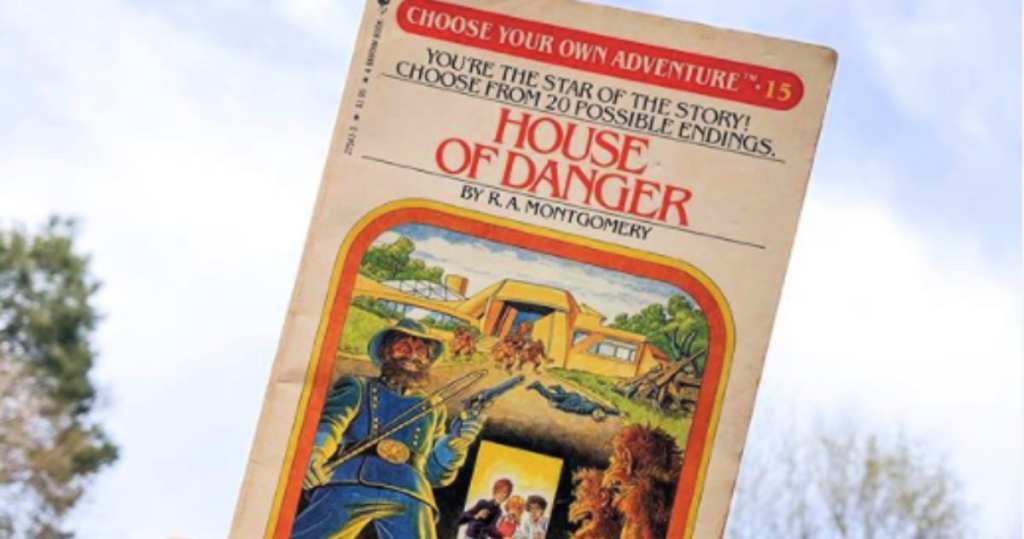As a kid, I loved to read. I devoured The Babysitters’ Club, Nancy Drew, A Wrinkle in Time, Judy Blume – anything I could get my hands on, really.
The first time I ended up with a Choose Your Own Adventure book, my mind was blown. I can’t say for sure if or how much those books informed my desire to become a writer, but I can say for sure that I loved having some input into how the book I was reading ended.
The first novel-without-an-ending was acquired by Bantam, and the editor who discovered the book – The Cave of Time – was as green as they come Joelle Delbourgo loved the way the reader assumed the role of the hero in the book, choosing every few pages how to proceed.
https://www.instagram.com/p/B3rhZISna-_/
There were more than 40 possible endings – some happy, some sad, some in the middle – and Delbourgo loved the idea. She thought it would work great as a series, but first, she had to convince the senior editors she wasn’t off her rocker.
They didn’t think she was, not at all. They thought it was a great idea – and they weren’t alone.
Another author, Edward Packard, had written a book in the late 1960s called Sugarcane Island that also required reader participation to get to the end. He’d gotten an agent with the book in 1969 but no editors had snatched up the project.
In 1975, he sold it to Vermont Crossroads Press. They published the book and Packard began to write more books like it, but it was a small press and their distribution wasn’t very wide.
“He was not equipped to saturate the market,” Packard recalled.
In the end, the head of Vermont Crossroads Press, R.A. Montgomery, passed the title along to another literary agent, where it found its way into the hands of one Joelle Delbourgo.
https://www.instagram.com/p/B5av963gBgT/
“I got really excited,” Delbourgo remembers. “I said, ‘Amy, this is revolutionary.’ This is precomputer, remember. The idea of interactive fiction, choosing an ending, was fresh and novel. It tapped into something very fundamental.”
Bantam officially launched the series in 1979.
Montomery and Packard were both given contracts – six books each – and Bantam threw their weight behind the first title (Journey Under the Sea) by flooding book fairs, creating teaching guides for classrooms, and giving away thousands of copies.
By 1981 there were 4 million copies in print.
And that was before the daughter of a New York Times columnist raved about the book, leading her father to write up a piece in the paper.
https://www.instagram.com/p/B7wQis7gsCY/
Then, they exploded.
Bantam started publishing one title a month, numbering them like a serial and adding another level of collectability to the set. Other series would pick up on this and do the same – The Babysitters’ Club, Sweet Valley High, The Nancy Drew Files – and it proved to be a winner across the board.
Packard and Montgomery brought more writers on board in order to keep up. The books tried out different subjects, like sports and Disney tie-ins, but the ones that truly took readers on an “adventure” of some type continued to sell the best.
Within a decade, the series was showing signs of slowing down. The number of endings dwindled from a more than two dozen to eight, and as computer and video games ramped up to take over everything, they easily cornered the market on interactivity.
In 1999, Bantam retired the brand and allowed their trademark to lapse. They had sold 250 copies.
“The reading happened because kids were put in the driver’s seat. They were the mountain climber, they were the doctor, they were the deep-sea explorer. They made choices, and so they read,” mused Montgomery.
https://www.instagram.com/p/CAf7VNXJFOT/
For Delbourgo, the career-defining moment reminds her that a gut-feeling can be the key in acquiring books as an editor or a literary agent.
“I remember how I felt when I read the books and how excited I got, the clarity I had about them. I couldn’t have imagined the incredible impact it had or how prescient it was.”
That’s how it is, with lightning in a bottle. Whether it lasts for an hour or a couple of decades, you only know it when you see it – no way to predict it, no way to guess what’s coming next – but it’s always a magical experience for those involved.






